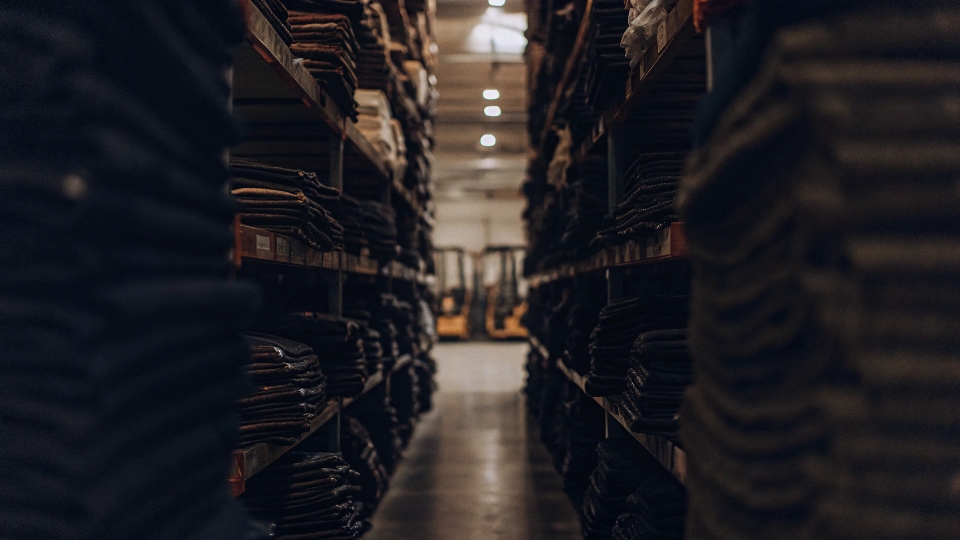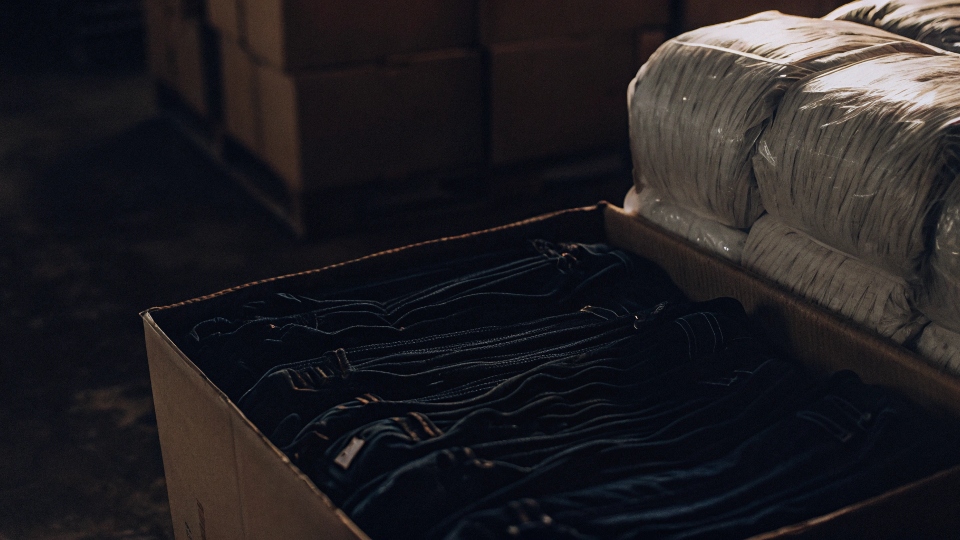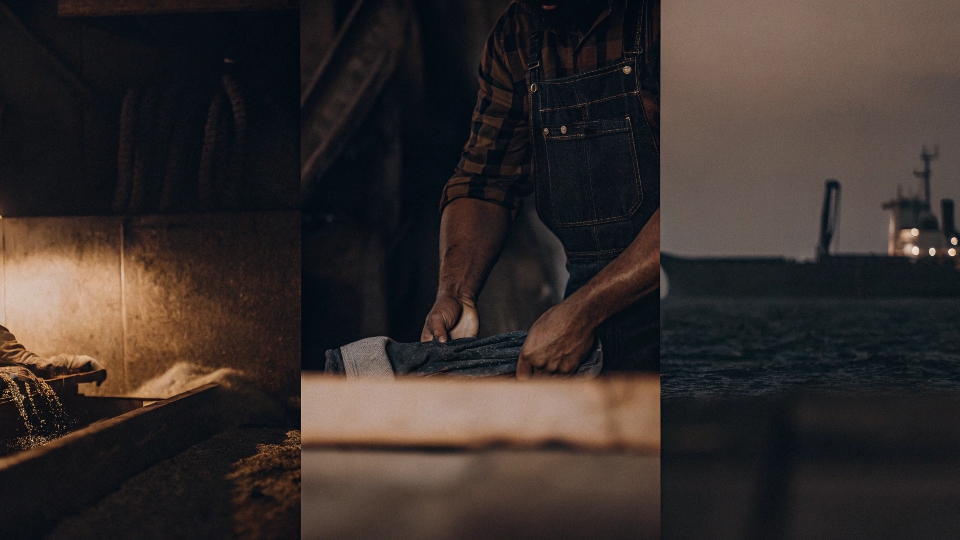You have a vision for a denim line or a plan to stock your store, but sourcing is a huge hurdle. Finding a reliable supplier who can deliver quality jeans in bulk without demanding impossible quantities can feel overwhelming.
You can buy jeans in bulk from three main sources: directly from a factory partner like DiZNEW for custom designs, from a wholesale distributor like Apparel Candy for reselling ready-made styles, or from a domestic manufacturer like Hyde Park Denim.
The best place to buy depends entirely on your business model. Are you a designer like Dean, who needs a factory to bring a specific creative idea to life? Or are you a retailer who needs to stock your shelves with current trends? Over my 20 years in the denim business, I've learned that the right supplier is the foundation of success. Let's explore the options so you can find the perfect partner for your needs.
How many jeans are in a bale?
You hear industry terms like "bale" and picture massive, unmanageable bundles. You worry that buying in bulk means you have to order thousands of pairs at once, which is impossible for your growing business.
A "bale" is not a standard unit for new jeans. That term is for raw materials like cotton or for secondhand clothing. For new jeans, you order based on the supplier's Minimum Order Quantity (MOQ)1, which can range from a few pairs to hundreds.
This is a common point of confusion, so let’s clear it up. In my factory, we never talk about "bales" of finished jeans. We talk about cartons, boxes, and most importantly, Minimum Order Quantities (MOQs). The MOQ is the smallest order a supplier is willing to accept, and it varies greatly depending on who you buy from. Understanding the different MOQ structures is key to finding a supplier that fits your scale.
For example, a wholesale distributor like Apparel Candy, which sells pre-made styles to retailers, might have a very low MOQ. You might be able to buy a single "pack," which could be 6 or 12 pairs of a single style in assorted sizes. This is ideal for a boutique testing a new trend. On the other hand, if you partner directly with a factory like mine, the MOQ is higher because we are setting up a custom production run just for you.
| Supplier Type | Typical MOQ Structure | Best For |
|---|---|---|
| Wholesale Distributor | Low (by the pack or dozen) | Retailers reselling existing styles. |
| Direct Factory Partner | Higher (e.g., 300-500+ units per style/wash) | Brands creating their own custom designs. |
| Domestic Manufacturer | Varies, often higher than distributors | Brands prioritizing "Made in USA2" and fast turnarounds. |
At DiZNEW, we understand that new brands need flexibility, so we work to find a starting point that makes sense, partnering with them to grow.
What time of year are jeans cheapest?
You're trying to maximize your budget and think there must be a secret "off-season" to buy jeans in bulk for a lower price. You're waiting for the right moment to place a big order and save money.
For custom manufacturing, prices are stable year-round. For wholesale distributor3s clearing out inventory, jeans are cheapest after major retail seasons, like after the back-to-school rush in late fall or after the spring season in late summer.
The price cycle for business-to-business purchasing is very different from what you see as a consumer. In retail stores, prices drop at the end of a season to make room for new inventory. When buying in bulk, the pricing model depends on the type of supplier.
If you are working directly with a factory like mine to create your own jeans, the price is based on the cost of fabric, labor, and the complexity of the finishing. These costs don't change much throughout the year, so our prices are consistent. Ordering in a factory's quieter period might get you a faster delivery time, but not a discount.
However, if you're buying from a wholesale distributor, seasonality is a big deal. Their business is to sell finished goods. A company like Apparel Candy, for instance, is a great resource for "clearance jeans," as your insight notes.
This is where you can find great deals. They buy or hold stock for a season, and whatever doesn't sell needs to be cleared out. This means you can buy trendy spring flare jeans for a great price in August, getting your boutique a fantastic margin.
Why have jeans gotten so expensive?
You look at your invoices and see the costs creeping up. The rising price of jeans is squeezing your profit margins and making it harder to price your products competitively for your customers.
Jeans have gotten more expensive due to a combination of rising raw material costs, higher global shipping fees4, and labor. Furthermore, the modern consumer's demand for complex, artisanal washes and sustainable production also increases the cost.
As a factory owner, I see these cost increases firsthand. It's not one single thing, but a chain reaction of global factors. The price of raw cotton, the very heart of denim, has been volatile and trending upward. Then there's the cost of getting that denim to my factory and shipping the finished jeans to my clients, which has skyrocketed due to global logistics issues.
But a huge part of the cost, and also the value, comes from the finishing process. This is my area of expertise. A simple, dark-wash jean is relatively inexpensive to produce. But a fashionable, vintage-looking jean with complex fading, whiskering, and distressing requires incredible artistry and resources.
It involves skilled workers hand-sanding the denim, precise laser machines etching patterns, and multiple washing cycles. Each step adds labor, time, and energy costs. The more "character" a jean has, the more it costs to create that character. So while prices are rising, so is the level of craftsmanship demanded by the market.
Who is the biggest seller of jeans?
You look at the market and see huge names everywhere. You wonder if you should be trying to work with the biggest players, thinking their scale must mean they are the best source.
While massive retailers like Walmart or iconic brands like Levi's sell the most units to consumers, the "biggest" seller is not the right partner for a growing fashion brand. Your focus should be on finding the right type of supplier for your specific needs.
The biggest sellers are masters of volume. They serve the mass market with millions of pairs of jeans. But they are not set up to be partners for a designer with a unique vision or a boutique that needs trendy, small-batch inventory5. Chasing the "biggest" is the wrong goal. The right goal is to find the "best fit" for your business.
This is where understanding the different types of suppliers becomes your superpower. Your insights provide perfect examples:
- The Factory Partner (DiZNEW): If you are creating your own brand, you need a partner like us. We are, as your insight states, a one-stop solution. We work with you to develop everything from mom jeans and high-rise skinny jeans to ripped vintage styles. We bring your vision to life.
- The Wholesale Distributor (Apparel Candy): If you are a retailer, you need a supplier like this. They offer a wide selection of already-made clothing that you can buy in small quantities to stock your store. They are a resource for finding popular styles at affordable prices.
- The Domestic Manufacturer (Hyde Park Denim): If your brand identity is built on "Made in USA2," a US-based factory is your best choice. They offer quality and the appeal of local production, serving everyone from small to large brands who prioritize domestic manufacturing.
Conclusion
Buying jeans in bulk is about strategic sourcing. Choose a factory partner for custom creation, a wholesaler for reselling, or a domestic factory for "Made in USA," depending entirely on your brand's unique needs.
-
Understanding MOQ is crucial for effective sourcing; this link provides detailed insights. ↩
-
Explore the advantages of sourcing jeans that are produced domestically. ↩ ↩
-
Learn how wholesale distributors can help you stock your store efficiently and affordably. ↩
-
This link explains the impact of shipping costs on the overall price of jeans. ↩
-
Discover strategies for effectively managing small-batch denim inventory. ↩











